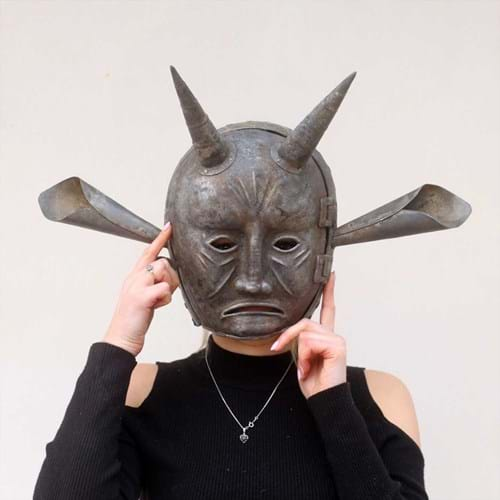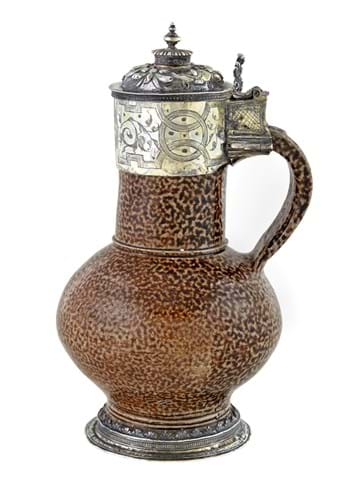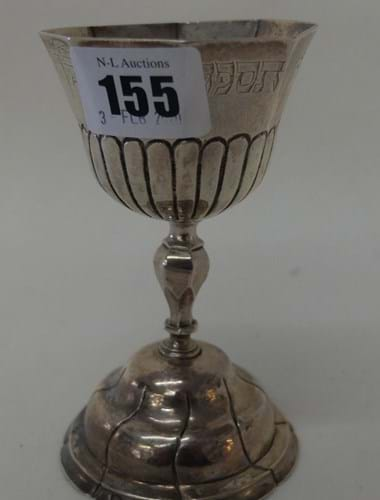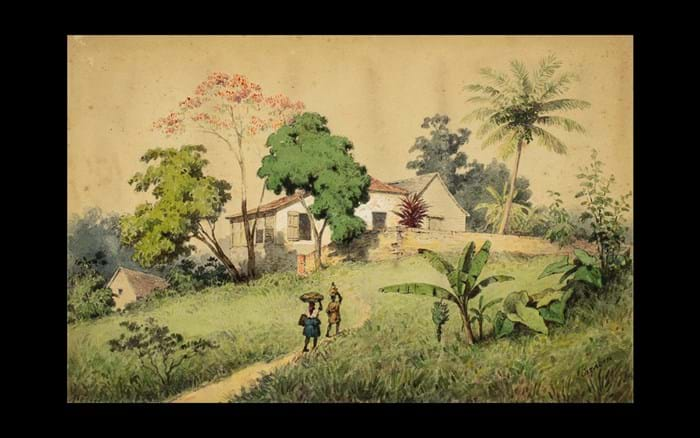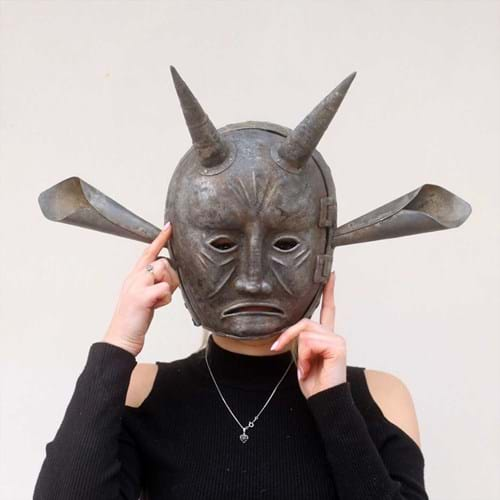1. 16th century beer jug – £8300
Beer was the preferred beverage of all classes in 16th century England and much of it was drunk from imported Rhenish salt glazed stoneware. It was not unusual for wealthy Elizabethan drinkers to have their German jugs and mugs mounted with silver decorated in the latest style with strapwork and engraved fruit and figures.
Given their relatively small metal content, a number did survive the great bullion melting of the Civil War, making them perhaps the most recognised example of late 16th century silver.
This 9in (23cm) example, offered for sale at Doyle’s in New York on February 5, combines a Rhenish ‘tigerware’ jug with a silver gilt mount marked for London, 1570 and the unidentified maker’s mark of a head between the initials IC.
The provenance records its purchase at Tiffany & Co, New York in November 1932 for $1800 – an indication of the bullish collecting market for early silver at the time. By way of comparison, a new Ford Model 18 Roadster was priced that year at $460.
In relative terms, the $8000-12,000 estimate it received almost nine decades later was modest but it proved perfectly accurate. The hammer price was $10,800 (£8300).
2. Jewish silver cup – £4200
German silver Kiddush cups survived the Second World War in only relatively small numbers but there were some treasured heirlooms, part of Jewish family festivals for generations, that were kept safe throughout the period of Nazi rule.
The majority of surviving examples were made in Augsburg in the middle decades of the 18th century and assume a similar form to this example that surfaced with modest two-figure expectations at NL Auction Rooms in London on February 3. Engraved with a Hebrew blessing and the (possibly later) ownership inscription J Lazarus, it was clearly marked to both the raised foot and the octagonal bowl with the ‘loth’ weight 13 (denoting the silver fineness of 812 parts per 1000), the maker’s mark AK and town mark of Frankfurt am Main – once a centre for the manufacture of Jewish ceremonial silver.
Similar objects are keenly contested in specialist sales of Judaica. Sufficient bidders spotted this under-catalogued example, estimated at £40-60, to send it to £4200.
3. Irish chess board – £2400
Killarney was probably the first town in Ireland to draw large numbers of tourists, attracted by its close proximity to lakes and mountains and a much-publicised trip by Queen Victoria and the Price Consort. Its most popular export were the marquetry souvenirs known as Killarney ware.
Typically made with arbutus, a timber which grew wild in the west of Ireland, or indigenous bog oak, the forms were inlaid with traditional Irish emblems and vignettes of familiar landmarks.
This folding chess and backgammon board, sold for an unexpected £2400 (estimate £100-200) at Andrew Smith & Son in Alresford, on February 5, is inlaid with shamrock, harp and ovals of Ross Castle.
It was sold with a complete chess set with pieces (the kings 4in / 10cm high) made in the two local timbers.
4. Trinidad watercolour – £24,000
Trained in both England and in Paris, Michel-Jean Cazabon (1813-88) became Trinidad’s first internationally known artist. Plate books featuring his lithographs of the West Indies were produced in the 1850s and ‘60s, introducing Europeans to the plains of the Caroni swamp, the tropical forests at Chaguaramas and portraits of mulattoes, indentured natives, planters and merchants.
George Harris, 3rd Baron Harris and governor of Trinidad from 1848-54, was a key patron. The collection of 44 Cazabon paintings displayed at his family seat, Belmont in Kent, is considered the most important visual reference for 19th century Trinidad.
Signed watercolours such as this are rare visitors to the auction room, although there are some precedents. According to Art Sales Index the record for the artist is the £50,000 bid at Christie’s back in 1997 for an oil titled Coast at Le Carbet, Martinique. More recently, in December 2017, Figures Bathing in a Pool, Plantation Houses Beyond, Trinidad, sold for £42,000, also at Christie’s, while in August 2018, Cumbrian firm Penrith Farmers’ & Kidd sold a foxed and stained watercolour of a British merchant vessel at anchor in the Caribbean for £27,000.
This 10 x 7in (25 x 17cm) example was titled in pencil View in the Valley of St Annes, Trinidad.
It had an estimate of £8000-10,000 at Gerrards of Lytham St Annes, Lancashire on February 6-7 and more than doubled expectations selling at £24,000.
5. Victorian witch's bridle – £750
The scold's bridle – sometimes called a witch's bridle, a brank's bridle, gossip's bridle or simply branks – was an instrument of punishment and public humiliation. These devices were first recorded in 16th century Scotland with kirk sessions and barony courts inflicting the iron mask upon women considered to be rude, nags or common scolds.
Most ’survivors' are actually Victorian fakes. This full head mask with hinged backplate was probably produced as a curiosity around 1900. A popular talking point too at Sworders' Out of the Ordinary sale in Stansted Mountfitchet on February 11, it found a buyer at £750 (estimate £600-900).
6. Vanessa Bell portrait – £16,000
This oil on canvas portrait of Sir Leslie Stephen came for sale at Roseberys London on February 11 with an attribution to his daughter Vanessa Bell (1879-1961) and an estimate of £1500-2000.
Just prior to sale the cataloguing was upgraded to an autograph work with the picture formally titled Portrait of Sir Leslie Stephen and dated c.1902-03. Richard Shone, author of The Art of Bloomsbury (1999) provided the auctioneers with the key information for what became a £16,000 picture.
Measuring 2ft 4in by 2ft (67 x 60cm) this is Vanessa Bell's earliest known portrait painting. Sir Leslie Stephen, father to Bell and Virginia Woolf, was an eminent man of letters and the editor of the first 26 volumes of the Dictionary of National Biography. This portrait is similar to another (on loan to the National Portrait Gallery) painted by George Frederic Watts who was both a family friend and a significant influence on Vanessa Bell’s early work.


